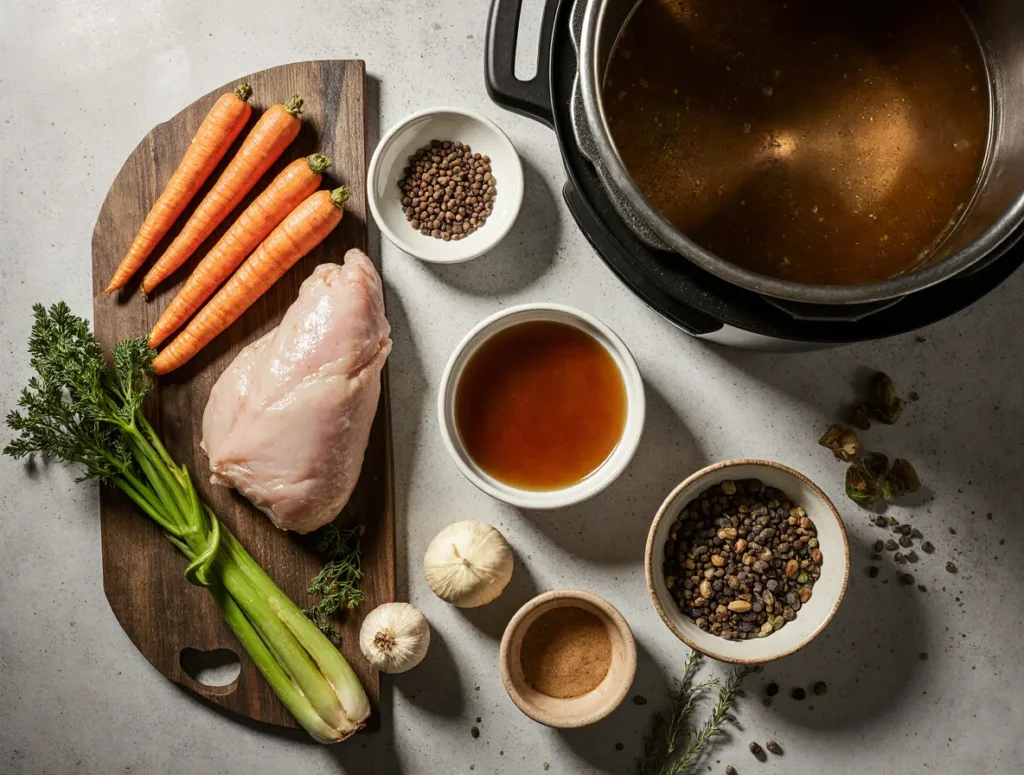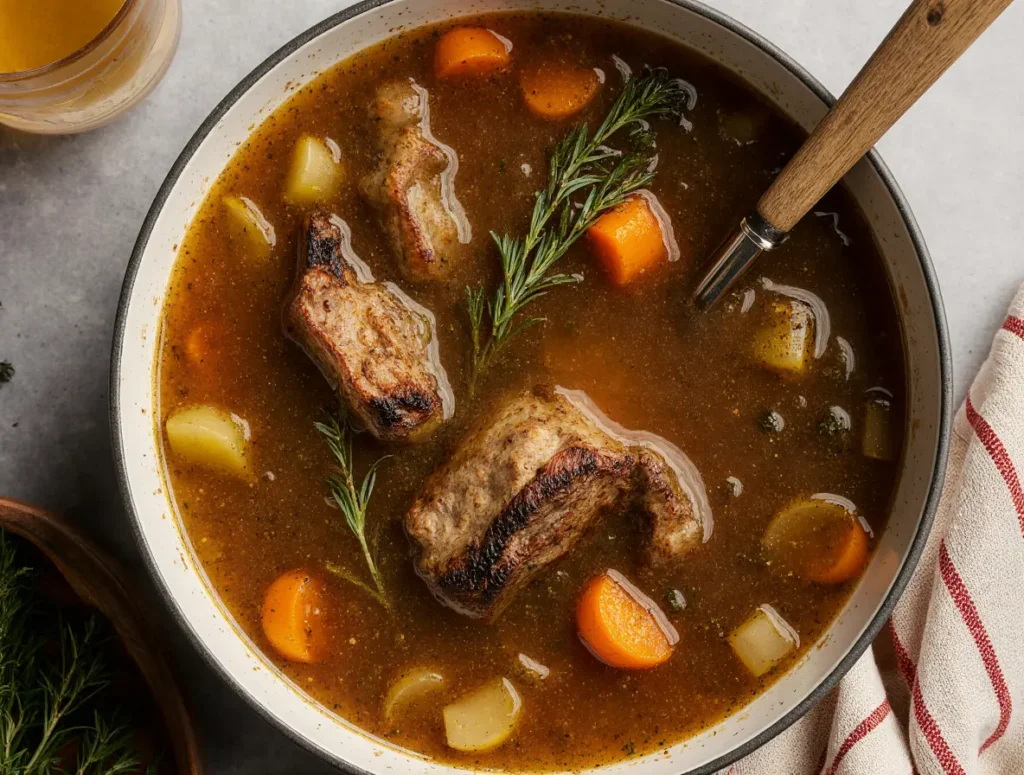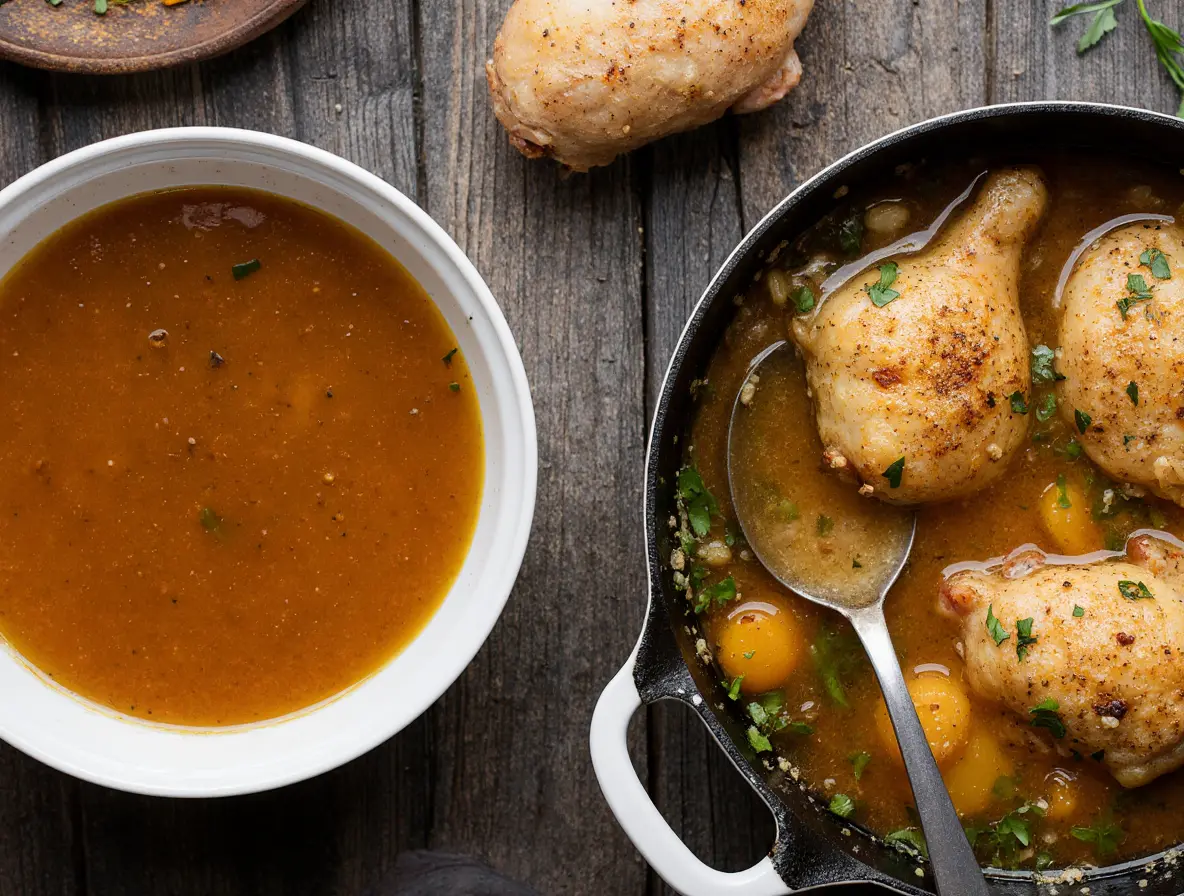Why Everyone’s Talking About Chicken Bone Broth
Ever heard someone rave about a chicken bone broth recipe like it’s a miracle elixir? Turns out, they might be onto something. The chicken bone broth recipe has exploded in popularity over the last decade, popping up in cafes, grocery store shelves, and health influencer feeds. But here’s the thing: it’s not just another fad. This nutrient-packed liquid has been a staple in traditional diets for centuries. It’s time-tested, incredibly easy to make, and—most importantly—ridiculously good for you.
Think of chicken bone broth as a warm blanket for your insides. It soothes, nourishes, and supports your body in ways you probably haven’t considered. Whether you’re dealing with digestion woes, tired joints, or simply want something nourishing to sip on, this golden broth is your new best friend.
So let’s roll up our sleeves and dive into everything you need to know about mastering the ultimate chicken bone broth recipe at home.
Table of Contents
What Exactly Is Chicken Bone Broth?
Chicken bone broth is not your average soup base. It’s made by simmering chicken bones—especially joints and cartilage—for long periods of time (often 12 to 24 hours). This slow simmer allows the bones to release collagen, amino acids, minerals, and gelatin into the water, transforming it into a deeply nourishing and flavorful broth.
So, what’s the difference between broth, stock, and bone broth? It’s all about the simmer time and what’s extracted. Stock is made from bones but usually cooked for less time (3–4 hours). Regular broth often includes more meat and less bone. Bone broth, however, is the marathon version—it extracts the good stuff, like gelatin and trace minerals.
Imagine a tea bag: a short steep gives you a light tea (like stock), but a long, slow steep brings out full flavor and depth (like bone broth). That’s the magic.
The Nutritional Powerhouse in Your Pot
Why do health nuts and wellness gurus swear by chicken bone broth? Because it’s loaded with nutrients your body actually needs.
Key Benefits:
- Collagen & Gelatin: Supports skin elasticity, joint health, and even gut lining.
- Amino Acids: Like glycine and proline, which aid digestion and detoxification.
- Minerals: Calcium, magnesium, and phosphorus all naturally extracted from the bones.
- Hydration: Bone broth contains electrolytes that help keep you balanced and energized.
According to Dr. Kellyann Petrucci, author of Dr. Kellyann’s Bone Broth Diet, this broth can help reduce inflammation, improve sleep, and even aid in weight loss. “It’s one of the most healing foods we can consume,” she says.
So, the next time you feel a cold coming on or just need something comforting, this chicken bone broth recipe is like giving your body a spa day—from the inside out.
Essential Ingredients You’ll Need
One of the best things about making chicken bone broth? You don’t need anything fancy.
Here’s what you’ll need:
- Chicken bones: From a roasted chicken, raw carcasses, wings, necks, or feet (yes, feet are amazing for gelatin!)
- Cold filtered water: Enough to cover the bones (about 12–16 cups)
- Apple cider vinegar: Just 1–2 tablespoons to help extract minerals
- Vegetables (optional): Onion (skin on), carrots, celery, garlic
- Herbs (optional): Bay leaves, thyme, rosemary, parsley
- Salt and pepper: Go easy; you can season later
Using leftover bones from a rotisserie chicken? Great! You’re already halfway there.
How to Make Chicken Bone Broth Step by Step
Here’s where the magic happens. Don’t worry—this is one of the easiest kitchen projects you’ll ever do.

Step 1: Prepare the bones
If they’re raw, roast them in a 400°F oven for 30–40 minutes. This deepens the flavor and gives your broth a beautiful golden hue.
Step 2: Load up the pot
Place the bones and any optional veggies or herbs in a large stockpot or slow cooker. Add water until everything is just covered.
Step 3: Add vinegar and bring to a boil
Add the apple cider vinegar, then bring the pot to a gentle boil. Skim off any foam that rises to the top.
Step 4: Let it simmer
Reduce the heat and let it simmer:
- Stovetop or slow cooker: 12–24 hours
- Pressure cooker/Instant Pot: About 2 hours on high
Step 5: Strain and cool
Carefully strain the broth into jars or containers. Let it cool, then refrigerate. Once chilled, a layer of fat will rise to the top—this helps preserve it.
Step 6: Store or freeze
The broth keeps for up to a week in the fridge, or up to 6 months in the freezer.
Common Mistakes and How to Avoid Them
Making bone broth isn’t hard—but these small missteps can ruin your batch:
- Using too little bone-to-water ratio: Your broth should jiggle when cold. If it doesn’t, add more bones next time.
- Skipping vinegar: This simple acid is key to nutrient extraction.
- Cooking at a rolling boil: Keep it at a low simmer to avoid cloudy broth.
- Not skimming the foam: This helps keep the flavor clean.
- Forgetting the strain: Use a fine-mesh sieve or cheesecloth for the clearest results.
Think of it like tending a campfire. A steady, gentle flame gives you perfect marshmallows. Rushing it? Burnt mess. Broth is the same.
How to Use Bone Broth in Everyday Meals
Bone broth isn’t just for sipping—though sipping it warm from a mug is a vibe all on its own. It’s also the ultimate culinary multitasker.

Ideas to try:
- Cook rice or quinoa in broth instead of water
- Use it as the base for soups, stews, or gravies
- Add it to smoothies (just a splash!) for a protein boost
- Use as a braising liquid for meats
- Replace morning coffee with a warm mug of bone broth + lemon
Broth is like a flavor elevator—it quietly upgrades everything it touches.
Anecdote: My First Bone Broth Disaster
Let me tell you about the first time I tried to make bone broth. I used too much water, forgot the vinegar, and boiled the heck out of it. It came out watery, gray, and sad. But I didn’t give up. On my second try, I roasted the bones, added apple cider vinegar, and let it simmer slowly for 18 hours.
The result? Golden perfection. I poured it into a mug, took one sip, and felt instantly grounded. Now I keep a batch in my freezer at all times. Lesson learned: broth rewards patience.
What the Experts Say About Bone Broth
Dr. Josh Axe, a functional medicine practitioner and founder of Ancient Nutrition, says: “Bone broth is one of the most healing foods for your gut, joints, and immune system. It’s been used for centuries, and modern science is finally backing up what traditional cultures already knew.”
Nutritionists also praise bone broth for its digestibility and bioavailability. Unlike supplements, these nutrients come in a whole-food form your body knows exactly what to do with.
Conclusion: Why You Need This Recipe in Your Life
In a world of trendy superfoods and expensive supplements, chicken bone broth is a humble hero. It’s affordable, simple, and incredibly powerful. Whether you’re recovering from illness, supporting your skin and joints, or just looking for a healthy daily ritual, this chicken bone broth recipe delivers.
It’s not just soup—it’s self-care. And once you try it, you’ll wonder why you didn’t start sooner.
FAQs
1. How long should I simmer chicken bone broth?
Ideally 12–24 hours for best flavor and nutrient extraction. Instant Pot users can do it in 2 hours.
2. Can I use rotisserie chicken bones?
Yes! They’re perfect—just be cautious of added seasonings or salt.
3. Is bone broth the same as stock?
Not quite. Bone broth simmers longer and extracts more nutrients like collagen and minerals.
4. Can I freeze bone broth?
Absolutely. Use ice cube trays for easy portioning. It’ll keep for 4–6 months in the freezer.
5. What’s the jelly-like texture after cooling?
That’s gelatin—a great sign! It means your broth is rich in collagen and will be more nourishing.

